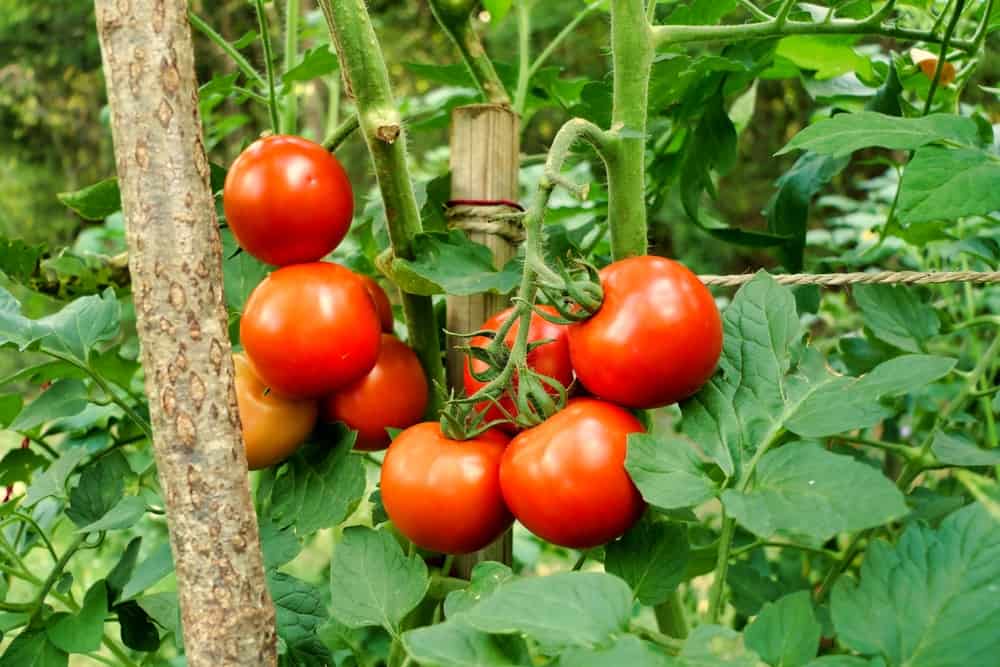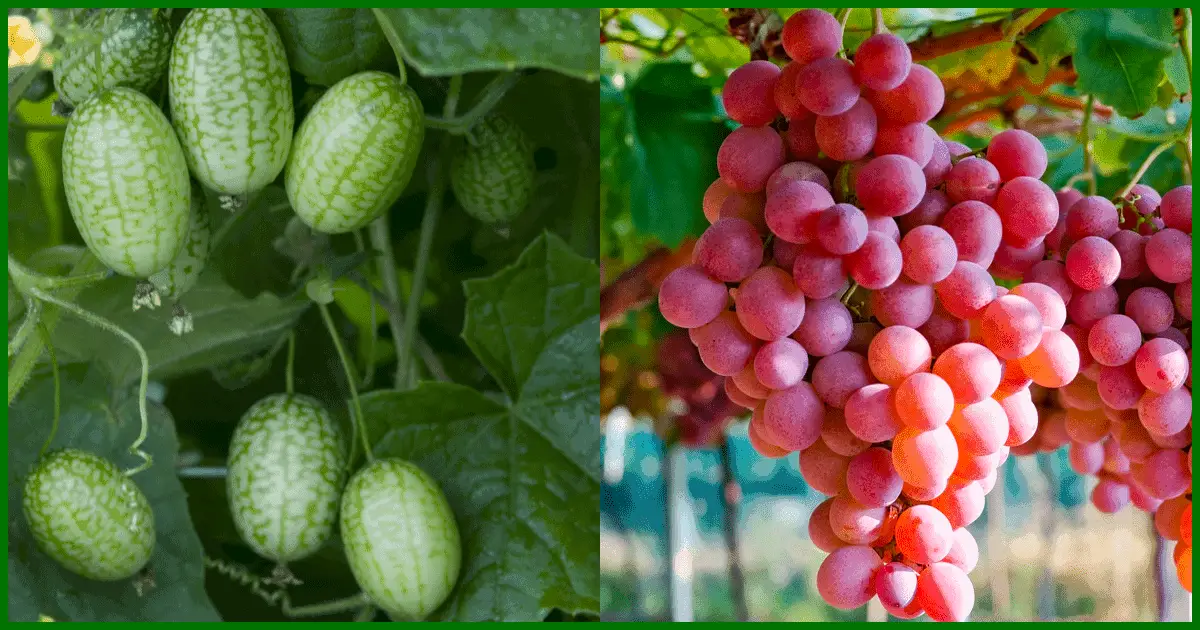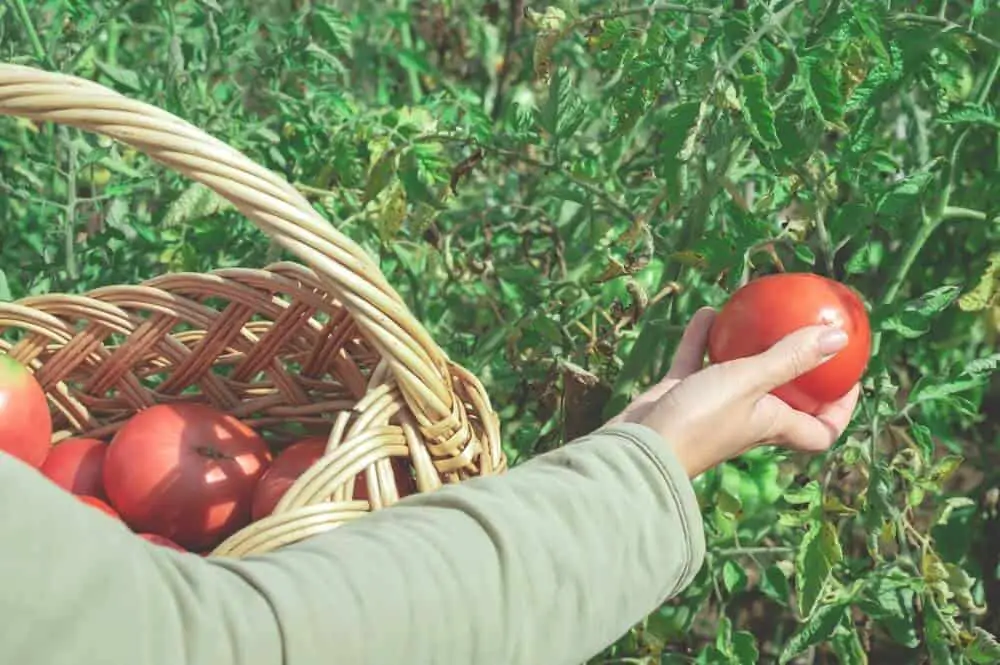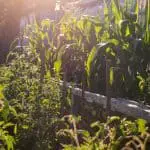Tomatoes are one of the most popular vegetables to grow in a garden. They can produce in large numbers, and they can be grown in pots for people with small garden spaces.
We think of tomatoes as growing on vines, but did you know that there are some called “bush” tomatoes?
Now, these don’t actually grow on bushes; they grow on vines just like all tomatoes. But they are still different from vining tomatoes.
So, what are the differences between them? It turns out there’s plenty!
From maturity rates to height to harvest periods, vining tomatoes and bush tomatoes are distinct very distinct types of tomatoes.
If you want to be a successful tomato grower, it’s important to know as much as you can about them. Use this guide to learn what makes bush and vine tomatoes different and the benefits of each.
10 Differences Between Vining and Bush Tomatoes
1. Growth Style

The most obvious difference between vining and bush tomatoes is how they grow. While they both produce vines, vining tomatoes grow very large and do much better in the ground.
They also require staking if you want more control over their growth.
Bush tomatoes, meanwhile, do very well in containers, as they need much less room. They also don’t require staking, although you can still choose to if it’s a larger plant.
2. Height
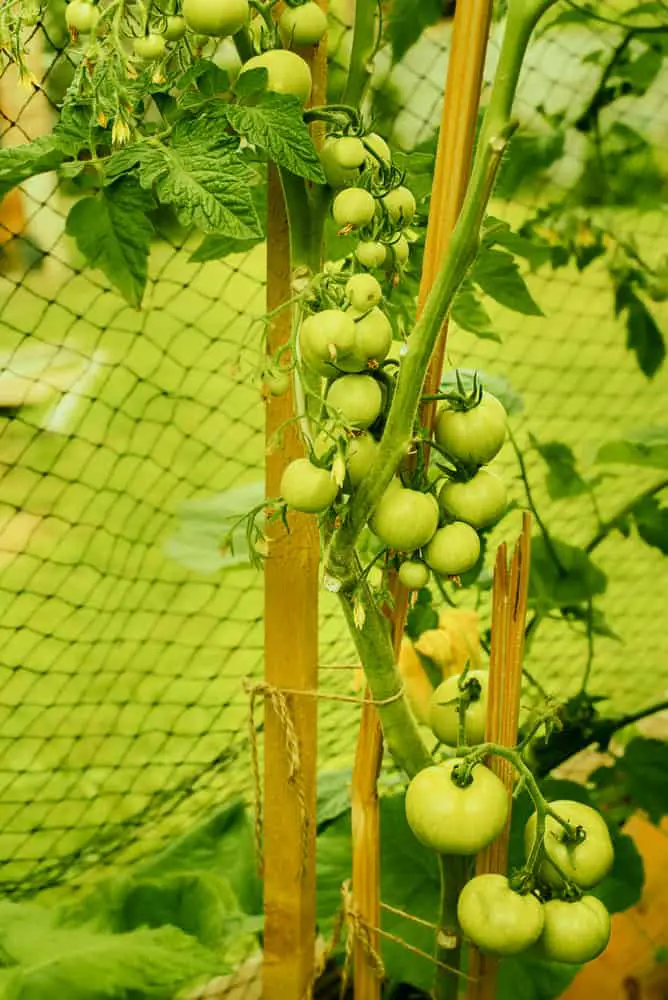
Bush tomato plants grow in a more centralized way, making them look “bushy.” Therefore, they only grow around three to four feet tall.
Vining tomatoes, on the other hand, can grow to a height between six and 20 feet tall!
They do need supports for their vines to grow upwards, though. Otherwise, they would simply snake along the ground.
3. Tomato Production Cycle
Bush tomatoes and vining tomatoes also go by the names “determinate” and “indeterminate.”
Bush tomatoes are determinate, which means they stop growing at a certain height and bear their tomatoes all at once. This is good for home-growers with limited space as well as those who like canning.
Vining tomatoes are indeterminate. They never stop growing, nor do they stop producing until they’re killed by frost.
Indeterminate growers will have tomatoes all season long at a steady rate rather than a huge amount all at once. Most heirloom tomatoes are indeterminate.
4. Placement Of Tomatoes
Tomatoes grow in different parts of the plant depending on if their vine or bush. Bush tomatoes all grow at the ends of the branches.
Vine tomatoes, though, grow all over the place!
5. When They Ripen
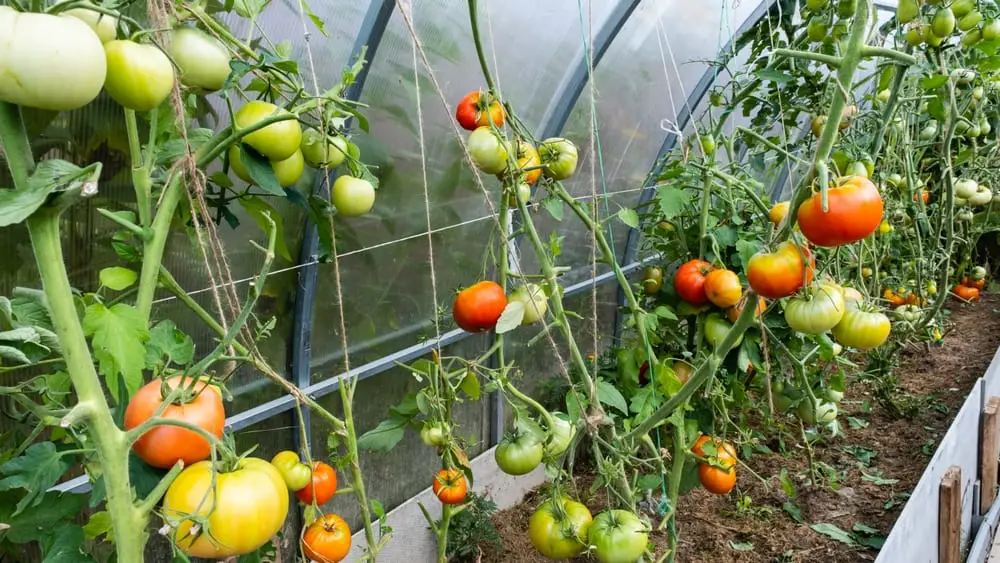
Bush tomatoes tend to ripen earlier in the season. So, if you want a lot of tomatoes fast, bush tomatoes are for you.
Because vine tomatoes produce all season, they ripen a little slower. Their production is staggered so it can last longer than bushes.
6. Harvest Period
Since bush tomatoes ripen all at once, you have a shorter window to harvest them all.
This can be good to schedule around, but it also means you can’t miss that window. If you do, that’s it for the season; the bush won’t produce anymore.
Vine tomatoes have a much longer harvest period, lasting the whole season. You don’t get as many tomatoes at one time, but it’s less tricky to harvest at the right time.
Miss a couple of tomatoes at the peak of their freshness? Wait a little while and you’ll have more!
7. Growing Environment
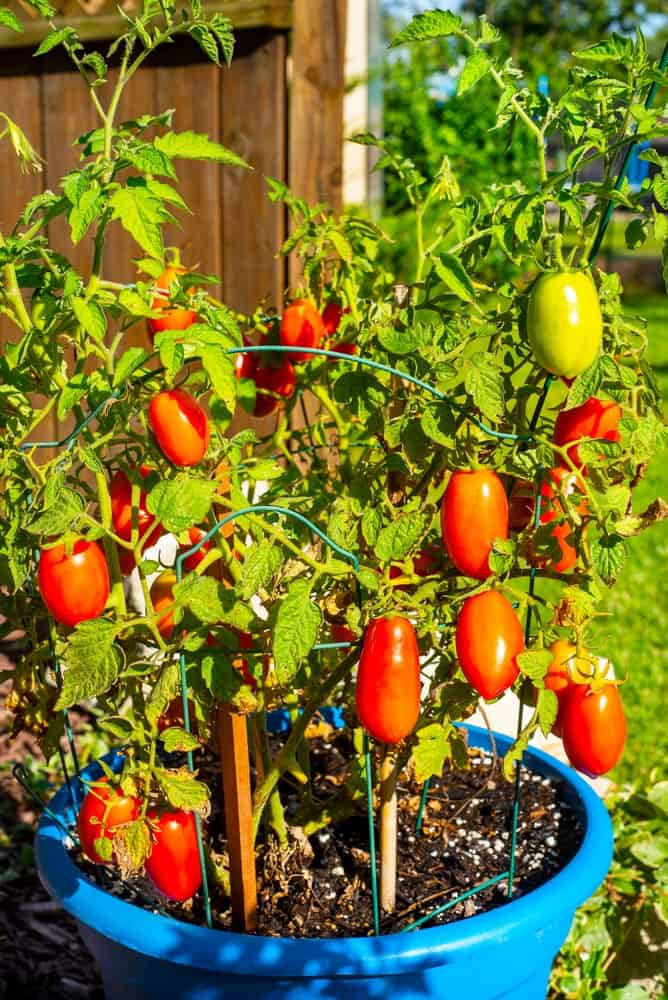
Using pots and other containers to grow plants is a great way to have a garden atmosphere in a small space. Apartment living really benefits from growing pots in plants.
Bush tomatoes are good for growing in pots because they stop growing at a certain point. A five-gallon bucket is a typical container for bush tomatoes.
Vine tomatoes, though, don’t do as well in containers. This is because they’re continuously growing and need a lot of space.
8. Pruning
Pruning is cutting away certain parts of a plant to help it grow or grow in a particular way.
Vining tomatoes can benefit from pruning because the fruits grow all along the branches. To get a particular number of tomatoes in a certain spot, you can prune your vining plant to that area.
Bush tomatoes don’t need pruning because their fruits always grow at the end of the branches. Pruning will lower your tomato yield and doesn’t do anything to change the location of the tomatoes.
9. Size
Tomatoes come in all shapes and sizes, from large beefsteak tomatoes to little cherry tomatoes.
If you’re looking for variety in your tomatoes, then vining tomatoes are the way to go. You can get all sorts of sizes from a vine.
If you want more uniform tomatoes, then bushes are for you. Bush tomatoes all tend to grow from small to medium size.
10. Canning Vs. Fresh
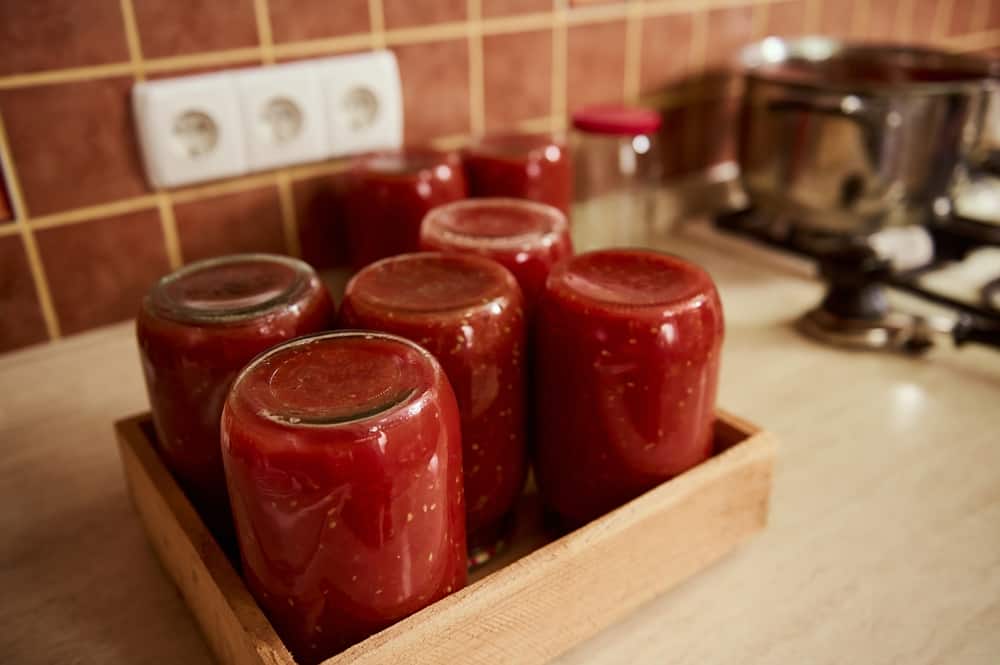
Just as all tomatoes don’t grow the same, they don’t taste the same, either. It’s not just a difference between cherry tomatoes and Roma’s, either.
Bush tomatoes and vining tomatoes produce fruit that has different tastes depending on when and how you use them. For example, vining tomatoes are better eaten fresh off the vine.
Bush tomatoes, meanwhile, are better for canning and for sauces. They have a thicker skin than tomatoes from the vine and fewer seeds.
Species Of Bush Tomatoes And Vining Tomatoes
Want to start growing tomatoes but not sure which varieties are bush tomatoes and which are vining?
Use the following handy guide to learn some of the most popular varieties of each type.
| Determinate/Bush Tomatoes | Indeterminate/Vining Tomatoes |
|---|---|
| Celebrity (globe) | Better Boy (beefsteak) |
| Jersey/Rutgers (globe) | Big Beef (beefsteak) |
| Green Zebra (small) | Amish Paste (paste) |
| Glacier (globe) | Black Krim (beefsteak) |
| Monica Roma (saladette) | Grape (elongated cherry) |
When To Choose Vining And When To Choose Bush
Now that you can tell between bush and vining tomatoes, you can better choose which is right for your garden.
Bush tomatoes are great for growing in containers, which means they’re also ideal for small spaces. Their thicker skin and fewer seeds also mean that they work well for sauces and canning.
Finally, if you want all your tomatoes at once and in uniform sizes, bush tomatoes are right for you.
Vining tomato plants work best in gardens with room to grow because they can get very large.
They also produce all seasons long, which means they’re great if you want fresh tomatoes on demand for sandwiches or salads.
Vining tomatoes take a little more work because they last all season, but you can also have more variety in your tomato sizes.
Similarities Between Vining Tomatoes And Bush Tomatoes
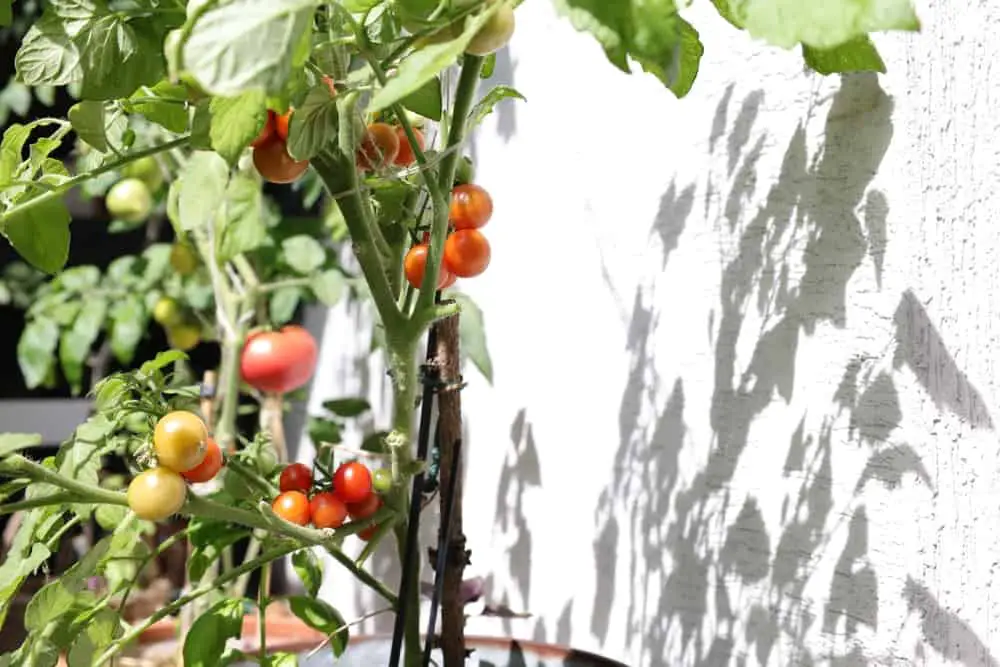
Now, just because there are numerous differences between bush and vining tomatoes doesn’t mean they don’t have similarities.
For instance, most tomatoes need fertile, neutral soil with good drainage. The pH balance of your tomato’s soil should be between 6.0 to 6.8.
Bush and vine tomatoes both grow best with regular feeding with organic fertilizer.
They also have similar water needs. You should water at the base of your bush and vines, preferably in the morning.
Most tomatoes need one to two inches of water per week, more if the weather is very dry and hot.
Finally, they both require a lot of sunlight. Both bush and vining tomatoes need at least six hours of direct sun each day. Eight hours is even better and will yield sweeter tomatoes.
In Summary
Tomatoes are a great fruit to grow whether you have a vast garden or just a patio with some pots. But it can seem overwhelming with so many different varieties to choose from.
Even knowing the difference between vining tomatoes and bush tomatoes can be daunting at first. But this guide is here to help you learn the differences, as well as which tomato varieties are which.
Your efforts will be “fruitful” in no time!
